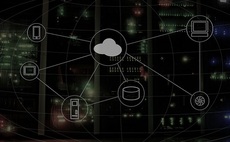Having a technology infrastructure that enables enterprises to pivot at a moment's notice used to be something that business leaders heard about from analysts at cloud conferences.
But in the year since lockdowns began, the pandemic has forced that need on every organisation. Indeed, it's no exaggeration to say that failure to satisfy it could have meant the complete failure of the enterprise.
Those that already had a culture of remote, flexible homeworking in place were better able to get up to speed in this alarming new world, while others struggled to port traditional office-based workflows and management practices into a largely home-based environment.
However, the uncomfortable truth is that the crisis should not have forced an overnight transformation on any forward-looking digital business. Remote, flexible working, mobility, cloud platforms, and collaboration tools have been the direction of travel throughout the 21st Century.
Evolution not revolution
The need to be flexible so that even long-established businesses can compete with nimble start-ups for disloyal customers - who increasingly demand low-friction services - could not have been clearer in a century in which every market has faced constant disruption.
But even those organisations that had journeyed deeper than others into the flatter, more collaborative culture of remote working had to support it with hardware as the crisis intensified.
Managing the crisis was as much about providing laptops, tablets, desktop computers, phones, and ancillary technologies as it was about software collaboration tools, especially when some employees were less well equipped at home than their peers.
In a survey of 150 IT leaders, Computing found that mobile hardware, such as laptops and tablets, was cited by 71 percent of respondents as an essential component of surviving the crisis, along with endpoint security (mentioned by 65 percent); and Office and productivity applications (by 64 percent).
This suggests that the right choice of hardware platform has been at least as important as the right cloud suite or conferencing app - and ideally should support the latter choices as a factor of design.
That demands standards, manageability, trust, and security, so that the hardware itself can be the bedrock of a malleable yet robust IT infrastructure - one that can bend, but which should never break.
Remote manageability
As well as supplying reams of new kit in many cases, most IT teams have had to support their dispersed workforces in new ways, and certainly at a much wider scale than ever before. Again, that demands standards-based hardware that has manageability at its core.
In that environment, it has rapidly become apparent that organisations need a hardware estate that can function effectively long into an unpredictable future, rather than merely get the enterprise over an unexpected hump.
It has also revealed that organisations need a hardware estate that is manageable remotely, while also being secure and reliable.
This is why IT leaders need to regard the pandemic as having hit the reset button on their technology investments. While we all hope that the crisis is passing or may simply become a manageable seasonal problem like the flu, that is far from certain.
If nothing else, we have all learned that our organisations must have the flexibility to adapt to new circumstances and bend into new shapes.
Asked which of the following aspects of remote working have been particular challenges since the crisis began, some strong themes emerged in Computing's survey, alongside the familiar topic of enabling collaboration in the cloud.
These included:
- endpoint performance
- endpoint stability/reliability
- endpoint manageability, along with security, connectivity, data/application access, and process/operational changes
These are all hardware-centric issues, especially in an environment where some staff may be using their own devices, making device management and security harder in many cases.
The endpoint hardware platform
So, to what extent would more capable endpoint hardware platforms and/or remote management functions have reduced the impact of problems? Nearly 60 percent of IT leaders either agreed or strongly agreed that they would have done.
For team leaders and the workforce, hardware manageability equals power and flexibility. It also provides the ability to ensure that applications and employees can keep working uninterrupted and securely.
We have to assume that many of the changes we have made to our organisations will be permanent, or at least long-term. Even if they are not, we know other crises will come along.
At the heart of IT leaders' jobs today must be a realisation that adaptability is central to our working lives now. Yet, many of the changes were an acceleration of existing trends, which is why some organisations have coped much better than others.
IT leaders urgently need to understand those trends, and see them as milestones on the strategic satnav, rather than a brief detour.
Read the full report to learn more about how the enterprise endpoint needs of IT leaders are changing.




















